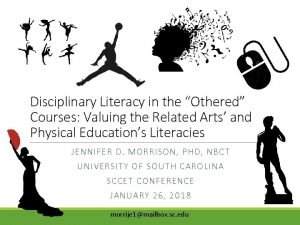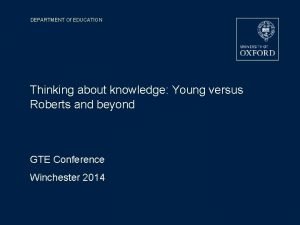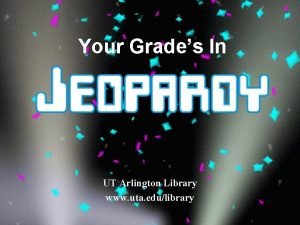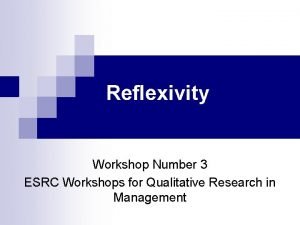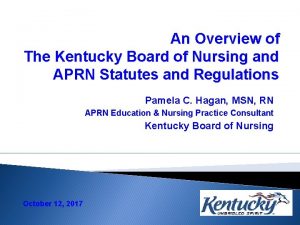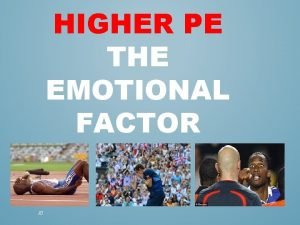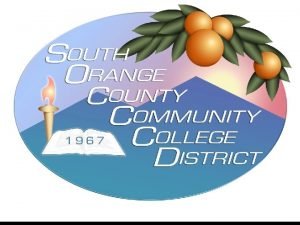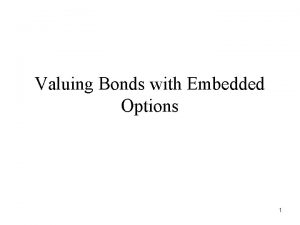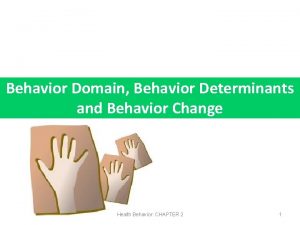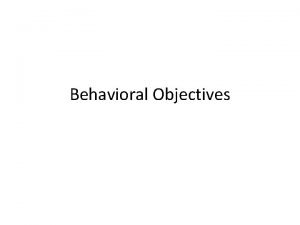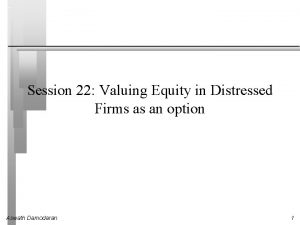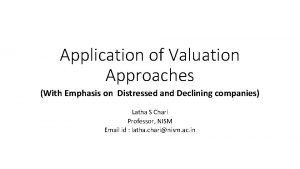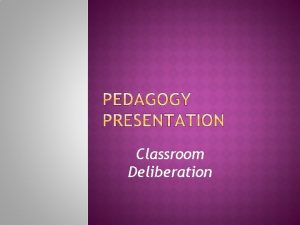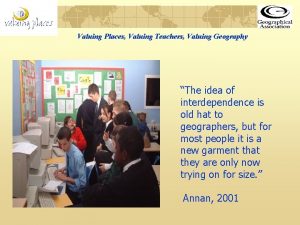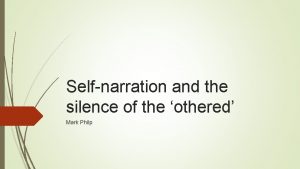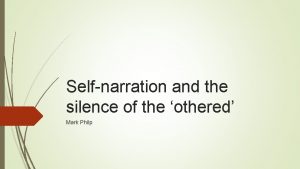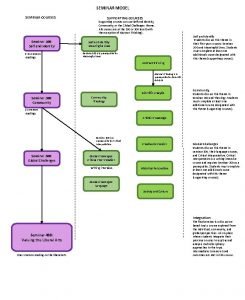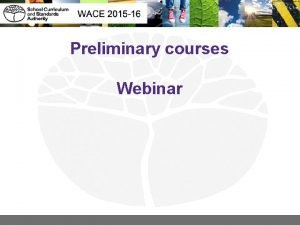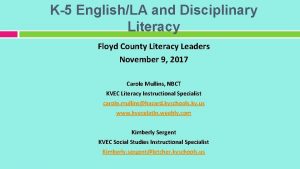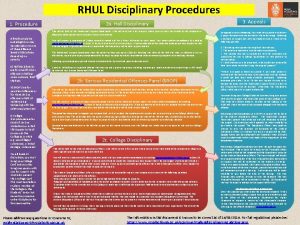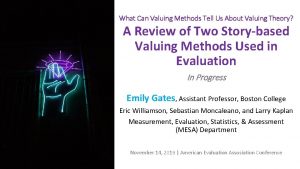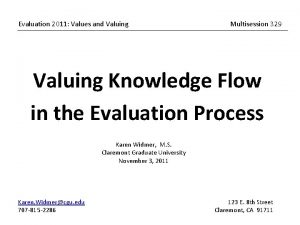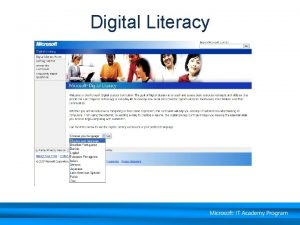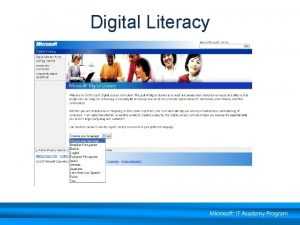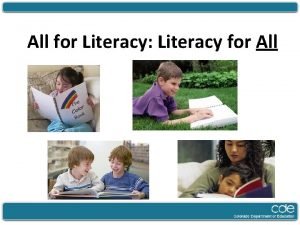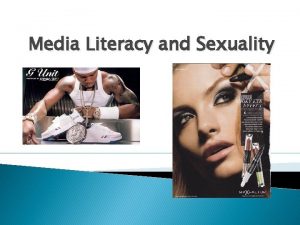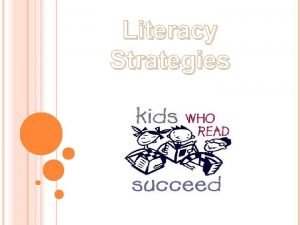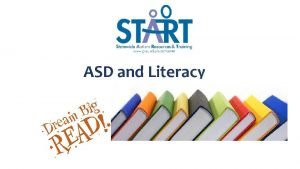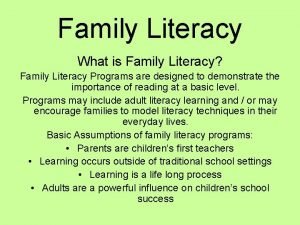Disciplinary Literacy in the Othered Courses Valuing the






















- Slides: 22

Disciplinary Literacy in the “Othered” Courses: Valuing the Related Arts’ and Physical Education’s Literacies JENNIFER D. MORRISON, PHD, NBCT UNIVERSITY OF SOUTH CAROLINA SCCET CONFERENCE JANUARY 26, 2018 morrije 1@mailbox. sc. edu

Makes sense but…. “Every teacher a teacher of reading” Common Core shift “Every teacher a teacher of literacy” What is meant by this? How does it play out in classrooms?

The “othering” of “elective” courses • Partly due to the high stakes assessments for which core courses are held accountable. • Schools and districts allocate limited resources to areas by which they are being judged. • Related arts and physical education seen as subordinate and positioned in a supportive role with regard to student and school success. • This undervalues teachers of these courses and • Minimalizes potential impact of these courses and their literacies as of value within their own right (Green, 2015).

Would you consider yourself literate? How do you know?

Let’s do a little exercising Spread out and give yourself space. Follow the instructions given. Do the best you can.

How did you do? Timed Pair Share * Take a moment to write down your response to the activity we just did ◦ What are you thinking about? How did you feel? Why did you feel that way? So what? * Choose who will be a bagel (Person A) and who will be a doughnut (Person B) * Bagels discuss their responses; Doughnuts listen * At time, Doughnuts briefly summarize what the Bagels said and then praise them. * Switch roles and repeat process with Doughnuts sharing and Bagels listening.

A historical misunderstanding… ELA = Literacy Instruction

Foreign Language Literacy Allows the individual to communicate effectively and creatively and to participate in real-life situations through the language of the authentic culture itself. Learning another language provides access into a perspective other than one’s own, increases the ability to see connections across content areas, and promotes an interdisciplinary perspective while gaining intercultural understandings. Music Literacy A person with music literacy is able to understand engage with music in a number of different ways, including the creative, responsive and performative artistic processes. He or she is able to perform music in a manner that illustrates careful preparation and reflects an understanding and interpretation of the selection

A two-pronged approach DISCIPLINARY LITERACY VS. LITERACY IN THE DISCIPLINE

DISCIPLINARY LITERACY IN THE DISCIPLINE WHAT OF THE DISCIPLINE HOW STUDENTS GET THE WHAT OF THE DISCIPLINE “the language of a specific discipline and being fluent with the different mediums used within a discipline” (Daniel) “It is the language, understanding, and instructions that are associated with that literacy. ’It is more aimed at what we teach than how we teach’ (Wolsey & Lapp, 2017). ” (Allyson) “It’s 3 rd and 10 on the 23 yard line” – the language students use and what they do with the knowledge” (Ben) “use of standard literacy (reading, writing, talking) within a particular discipline” (Daniel) “use of reading, writing, and communicating within a content area. It is having the understanding of how children read, write, and speak. ” (Allyson) “It’s 3 rd and 10 on the 23 yard line” - how I teach them the terms and rules (Ben)


Disciplinary Literacy Placemats §Look at the placemat in front of you §Take a few minutes to read through the quotes and information §Use Wiki. Stix in order to § Circle and underline key concepts § Make connections between items §What conclusions can you draw from this placemat? §What does this mean in terms of our classrooms and the teaching of disciplinary literacy or literacy in the discipline?

Bringing Relevancy to Skills • What do we read and write about in arts and PE? • Consider what professionals in the field do? What reading, writing, and communicating skills do they use? • Don’t know? Ask! • Consider problems within the discipline. It isn’t just about being able to dribble a basketball or sculpt a masterpiece.

Would you teach these works of literature together? Justify.

What about these ideas?

Using a problem-posing (Friere, 1970), thematic curricular frame enables rigorous, cross-disciplinary, multiliteracy instruction to occur in an authentic, meaningful manner for students.

UNESCO Global Goals 2030

“Freedom” by Beyoncé International Day of the Girl (10/10/17) Consider the traditional and disciplinary literacies needed to make this video. Consider how this video implements moves dance, music, technology, and art to a global, problem-posing level.

Make your content meaningful… How might UNESCO’s Global Sustainable Development Goals inform your instruction? How would using materials like these bring relevancy and problem-posing into your and your colleagues’ instruction? What would implementation of these goals look like or sound like in a classroom?

Quick Write • Write what the picture brings to mind • Describe the scene • Interpret the scene in terms of color, action, space, or line • Write a story inspired by the picture

Designed and copyrighted by Jason Dydo: https: //www. behance. net/Jason. Dydo

Possible Essential Questions for Problem-Posing in RAs and PE How do decisions, actions, and consequences vary based on people’s perspectives? To what extent does power or lack of power affect individuals? When is it necessary to question the status quo? Who decides? What influences our social and moral conscience? How are belief systems represented and reproduced through history/ literature/ art/ dance/ music / language/ culture/ fitness and health? What happens when individual and societal beliefs come into conflict with each other? How has technology shaped the way we create and deliver art/ music/ dance/ information/ knowledge/ language/ fitness and health? What shapes our identities? How does this explain personal, social, political, physical, and cultural differences? What issues affect global health? Who is responsible? What defines truth/ art/ love/ responsibility/ power/ culture/ teamwork/ sportsmanship? How do past actions influence our future conditions? How do individuals’ attitudes and belief systems impact motivation, self-perception, and expectation for success? Is knowing another language a survival skill?
 Disciplinary literacy in physical education
Disciplinary literacy in physical education Disciplinary knowledge
Disciplinary knowledge University of texas at arlington library
University of texas at arlington library Powerful disciplinary knowledge
Powerful disciplinary knowledge Disciplinary reflexivity
Disciplinary reflexivity Kentucky nursing laws
Kentucky nursing laws Disciplinary record higher pe
Disciplinary record higher pe Frisk letter of reprimand
Frisk letter of reprimand Examples of people as media
Examples of people as media Cyber literacy for the digital age
Cyber literacy for the digital age Comparison of media literacy and information literacy
Comparison of media literacy and information literacy Difference between media literacy and technology literacy
Difference between media literacy and technology literacy Effective duration formula
Effective duration formula Domains of behavior
Domains of behavior Affective behavior at the level of valuing
Affective behavior at the level of valuing Valuing cyclical companies
Valuing cyclical companies Valuation of ip
Valuation of ip Valuing distressed companies
Valuing distressed companies Triumvirate rome
Triumvirate rome Valuing distressed and declining companies
Valuing distressed and declining companies Descriptive ethics vs normative ethics
Descriptive ethics vs normative ethics Valuing private companies
Valuing private companies Valuing culture
Valuing culture
